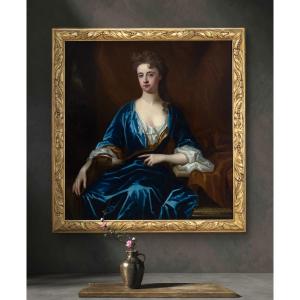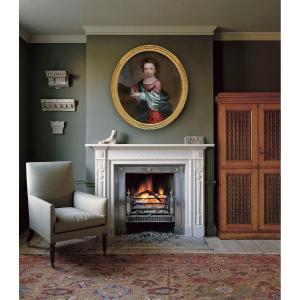Firstly, there was the pastoral mode which evolved mainly in the Netherlands in the 1620’s and lasted for about 50 years. This arcadian dress was thought to be free of the whimsical nature of changing fashions. Secondly there was the Roman dress which became established about 1650. The girl in our portrait has been depicted with pteruges on her upper arms and hanging from her waist; in Roman dress these were strips or lappets of leather or multi-layered fabric (linen) that acted as a defence for the upper parts of the limbs, hips, and thighs). This dress imbues the sitter with a Roman warrior-like or gladiator impression. A third type is a type often used by Van Dyke and Peter Lely which was known as “undress” and was a relaxed, effortless, and careless, and even restlessness, style.
This is a beautiful example of Byng's talent for child portraiture and is a wonderful demonstration of how the rhetoric of dress operated and how costume was carefully chosen to suit the ideals of a particular culture or individual sitter. Held in a gilded antique frame in excellent condition.
Edward Byng is thought to be a native of Wiltshire. His brother Robert was also a painter and many works have been jointly attributed to both brothers. Edward trained as an artist and began working in the studio of Sir Godfrey Kneller as a general assistant and then drapery painter. By 1723, he was Kneller’s principal studio assistant and lived with him at Kneller’s house in Great Queen Street. Kneller obviously rated his talents for he charged him the task in his will of completing many of his unfinished portraits (around 500 pictures), for which he would receive the sums due, bequeathed him many of his drawings, and left him an annuity of £100. Kneller recorded in his will of Byng "for many years faithfully served me".
Provenance: From a Hertfordshire (UK) country house
Measurements: Height 86cm, Width 73cm framed (Height 33.75”, Width 28.5” framed























 Le Magazine de PROANTIC
Le Magazine de PROANTIC TRÉSORS Magazine
TRÉSORS Magazine Rivista Artiquariato
Rivista Artiquariato
